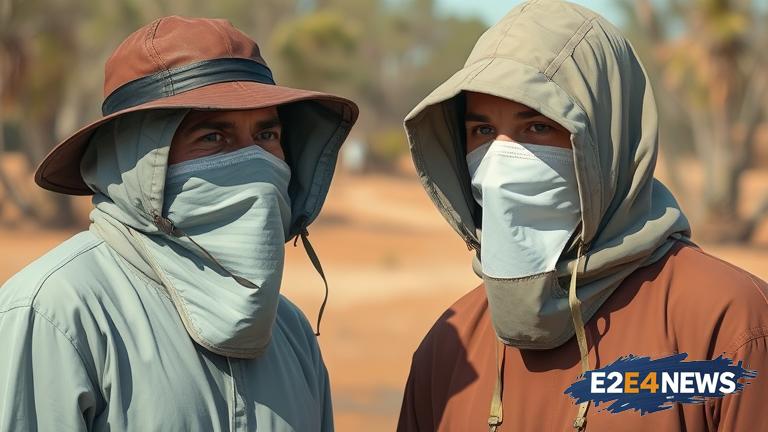The Northern Territory government has come under fire for its decision to reintroduce spit hoods, a controversial device used to restrain individuals who spit or bite. The move has been met with widespread criticism from human rights groups, indigenous organizations, and the general public. Critics argue that the use of spit hoods is a form of torture and can lead to serious physical and psychological harm. The device, which resembles a mesh bag, is placed over the head of an individual to prevent them from spitting or biting. However, many have raised concerns that the use of spit hoods can lead to suffocation, panic, and long-term trauma. The Northern Territory government has defended its decision, citing the need to protect police officers and other first responders from the risk of infection and assault. However, opponents argue that there are alternative methods that can be used to achieve this goal without resorting to such a draconian measure. The reintroduction of spit hoods has also sparked concerns over the treatment of indigenous Australians, who are already disproportionately represented in the criminal justice system. Many have pointed out that the use of spit hoods is a symptom of a broader problem of systemic racism and police brutality. The issue has also raised questions about the accountability of police officers and the need for greater transparency and oversight. The Northern Territory government has been accused of ignoring the concerns of human rights groups and the community, and of prioritizing the interests of police officers over those of vulnerable individuals. The controversy surrounding spit hoods has also highlighted the need for a more nuanced and evidence-based approach to policing and public safety. Rather than relying on punitive measures, many argue that the government should focus on addressing the root causes of crime and social unrest. This could involve investing in community-based programs, improving access to education and employment opportunities, and providing support for marginalized groups. The use of spit hoods has also been criticized for its potential to exacerbate existing social and economic inequalities. By targeting already vulnerable individuals, the government risks perpetuating a cycle of disadvantage and entrenching social and economic disparities. The controversy has sparked a wider debate about the role of policing in society and the need for greater accountability and transparency. Many have called for a more collaborative approach to public safety, one that involves working with communities and addressing the root causes of crime. The Northern Territory government has been urged to reconsider its decision and to engage in a more constructive dialogue with the community. Ultimately, the reintroduction of spit hoods has highlighted the need for a more compassionate and evidence-based approach to public safety, one that prioritizes the well-being and dignity of all individuals. The issue has also raised questions about the government’s commitment to human rights and its willingness to listen to the concerns of marginalized groups. As the debate continues, it remains to be seen whether the Northern Territory government will reverse its decision and adopt a more nuanced approach to policing and public safety. The use of spit hoods has been widely condemned by human rights groups and the community, and it is likely that the controversy will continue to simmer in the coming weeks and months. The Northern Territory government has been accused of ignoring the concerns of the community and of prioritizing the interests of police officers over those of vulnerable individuals. The controversy has sparked a wider debate about the role of policing in society and the need for greater accountability and transparency. Many have called for a more collaborative approach to public safety, one that involves working with communities and addressing the root causes of crime.
